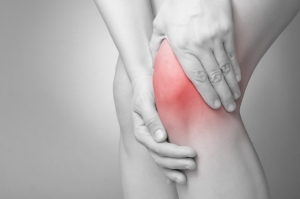3 common knee injuries - causes, symptoms, prevention and treatment
Posted on 16th February 2018 at 10:00
Hands up who suffers with knee pain?
We see a lot of clients with knee pain every week, lots of them are runners but it can affect all sorts of people from all backgrounds, be it sport or work-related. We tend to assume knee problems stem from incorrect footwear or overuse, however, the most common causes are muscular imbalances, poor hip stability or a weak core.
We’ve put together the three most common types of knee pain to help you understand the signs because, if left unresolved, these problems will turn a 'niggly' knee into a chronic problem. We've included some tips to help relieve the problem now and prevent it (re)occurring in the future. If you aren't sure what is causing the issue, please book in with one of our therapists and we will assess it for you.
ITBS (aka Iliotibial band syndrome)
The most common cause of knee pain in runners is ITBS.
This occurs when the long tendon of the tensor fascia latae muscle (TFL) which runs down the outside of the thigh to the knee (called the illiotibial band) rubs against the outside of the knee joint causing friction, pain and inflammation.
Causes:
weak hip muscles, particularly the gluteus medius can be a large factor
over pronation or poor foot biomechanics may increase the risk of injury
running on hills or on cambered roads regularly
Symptoms include:
pain on the outside of the knee which gets progressively worse as you run
there can be pain on bending and straightening your leg
if you bend your knee to 45 degrees or more you get pain on the outside of the knee
Prevention/treatment:
warm up properly before you start your runs or exercise
check the camber of the road, try to stick on even surfaces
rest or cross-train to take pressure away from ITB
book a sports massage to release the quadriceps, hamstrings, TFL and ITB
stretch regularly or use a foam roller
strengthening exercises for your glutes
Jumpers knee (aka patella tendinopathy)
This is an overuse injury that shows up as pain at the bottom of your knee cap. Too much running or jumping causes inflammation or degeneration to the tissues.
Patellar tendinopathy can be difficult to get over quickly so rest is extremely important as is a solid rehabilitation plan to get you back to training without risk of re-injury.
Causes include:
poor foot mechanics
muscle imbalances
incorrect training plans
Symptoms include:
tender feeling when pressing into the tendon below the knee cap
knee may look slightly larger or puffier than the other knee due to the inflammation
contracting quads can feel achy or even painful
jumping exercises can cause pain or discomfort
Prevention/treatment includes:
reducing the initial pain and inflammation through rest and ice
rehabilitation program which will include strengthening exercises
quad stretching exercises
sports massage to ease tension in the thighs
Patella femoral syndrome (aka runner’s knee)
PFS happens when the knee cap isn’t tracking correctly and rubs on the femur bone underneath. This causes irritation or damage to the cartilage, resulting in pain.
Causes include:
overuse
too much too soon
high impact through the knee
incorrect patella tracking due to muscle imbalances
Symptoms include:
aching pain in the front of the knee around and under the patella
tenderness along the inside of the kneecap
swelling may happen after exercise.
worsening when walking up and down hills
becoming worse after sitting for long periods of time
Prevention/treatment includes:
identifying the causes
strengthening muscles particularly Vastus Medialis (the inside quad)
stretching the quads
apply PRICE principles (protection, rest, ice, compression and elevation) after exercise
rest completely from activities that make it worse until pain has gone
a patella tracking knee brace or support may help
taping the knee can aid recovery
sports massage to loosen tight tissues
Maintenance massages will help you stay in top shape and prevent injury. If you are worried about your knees, please contact us. Massage, taping and strengthening exercises can all help.
Share this post:

